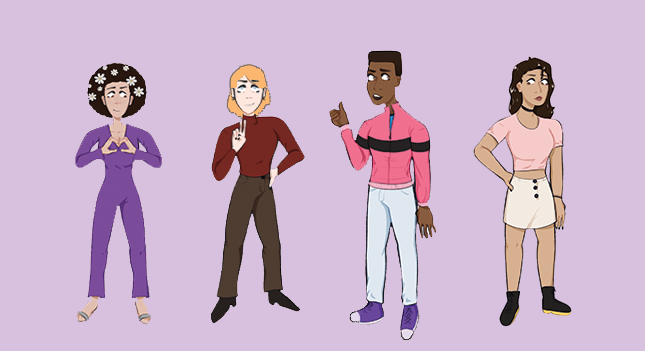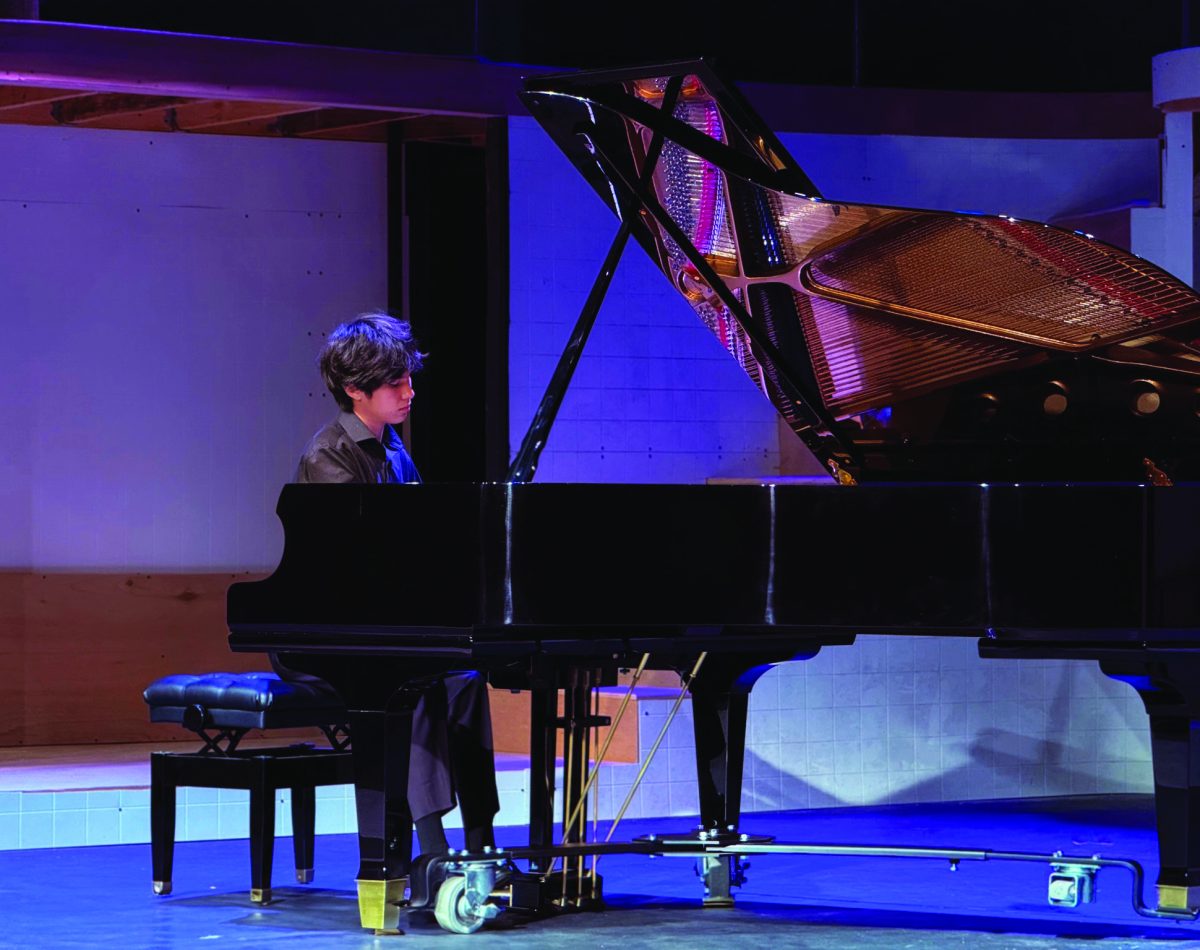As Kate Hassett ’22 scrolled through Depop, she became intrigued by the bright colors, faded denim fabrics and ’80s patterns she discovered.
Hassett attempted to navigate through the myriad of overpriced accounts, leading her to the real treasures hidden within the more niche profiles on the app. Hassett is among many students who use Depop to buy and sell clothing.
“I think it’s really popular because it is a cleaner and easier way to go thrifting,” Hassett said. “It functions like Instagram, so it connects with younger generations and makes it easier for younger people to use.”
According to FOX Business, Depop spokesperson Rebecca Levy said 90% of Depop’s more than 15 million active users around the world are under the age of 26. Hassett said she believes that the accessibility and affordability of thrift shopping increased the popularity of vintage fashion among younger generations. Fashionistas are now even able to thrift online, as Depop allows shoppers to easily buy and sell the second-hand vintage items they no longer want to wear. Depop users consist primarily of teenagers and young adults who use the app as a creative outlet to make money by selling their clothes. At the same time, buyers are able to add unique pieces to their closets.
Sofia Li ’22 has sold many of her own clothes on Depop, earning thousands of dollars through her sale. Though she struggled at first to conduct business transactions, Li said she learned how to successfully sell clothes by being helpful and fair with her customers.
“After I made my first sale, I realized I had a lot of stuff sitting in my closet that I didn’t really need anymore and would be better off in another home,” Li said. “I think I’m doing well on Depop because I’ve posted about it a bunch on social media and because I try to list new things every week, so I keep items coming. I also think I have pretty good customer service, so people think I’m reliable and trustworthy.”
Despite the app’s success, there is controversy surrounding how environmentally and economically ethical Depop is. Certain accounts buy clothes at thrift stores such as Goodwill for low prices and raise them on Depop in order to optimize profit.
Li said she believes individuals who sell “thrifted” clothes for unreasonable prices can cause thrift stores to raise their own fees. Because of the increased competition with apps like Depop, people who rely primarily on thrift stores to buy their clothes struggle more with finding affordable options. Hassett said she recognizes the unethical issues surrounding the app.
“On Depop, almost everything is overpriced on big accounts, so I like to go to smaller accounts to find clothes,” Hassett said. “[Small accounts] are usually just trying to get stuff out of their closet, while bigger accounts try to make a big profit. On my Depop, I always list things reasonably because not everyone has a thick wallet.”
According to the Student Environmental Resource Center at the University of California, Berkeley, thrifting items and purchasing on Depop are more sustainable ways of shopping. The study shows that nine out of 10 Gen-Z’ers believe companies are accountable for addressing environmental issues, causing the popularity of thrift shopping to rise.
The findings also indicate that though not all people intentionally help the environment by wearing second-hand clothes, the low prices of thrift stores have contributed to the increase in vintage fashion.
In addition to Depop, Hassett said she enjoys shopping at thrift stores because it’s socially responsible.
“I think it is great to go to places like Goodwill and Salvation Army because those are nonprofits that help the [underserved] community not only with reasonably priced clothing but also [with] jobs,” Hassett said. “I like vintage fashion because I hate wearing the same thing as someone else, and it’s like a needle in a haystack to find the same shirt or pair of jeans when thrifting. Thrifting helps me express my one-of-a-kind personality through clothes.”
Due to the global pandemic, Max Thompson ’23 said he has been forced to make adjustments to his thrifting habits.
“I usually get a lot of my clothes at thrift shops, so this year my family and I took extra precautions when we went out to get some new clothes,” Thompson said. “[We wore] lots of gloves, hand sanitizer and masks, as we can’t ever be entirely sure of how safe the management is being. It felt great for me to be out again and experience a bit of [something] normal.”
Thompson said he began thrift shopping as a way to spend time with his family and now believes that there are many benefits that come with shopping at second-hand stores.
“[Thrifting] is really environmentally friendly compared to shopping at fast fashion brands, and it is cheaper and easier for me to afford,” Thompson said. “I can get cool stuff for a fraction of the price.”
Performing arts teacher and theater department costume designer Lisa Peters said she believes that as time goes on, the trends we find popular now will become retro to later generations.
“As I see it, vintage fashion has been trendy for a very long time and will likely always be popular,” Peters said. “Every new trend is influenced by silhouettes from the past that feel new to those who weren’t around for their last appearance. What’s current today will be vintage tomorrow. And, trust me, one day in the future, high school students will be wearing styles that feel strangely reminiscent of what you’re wearing right now.”





























